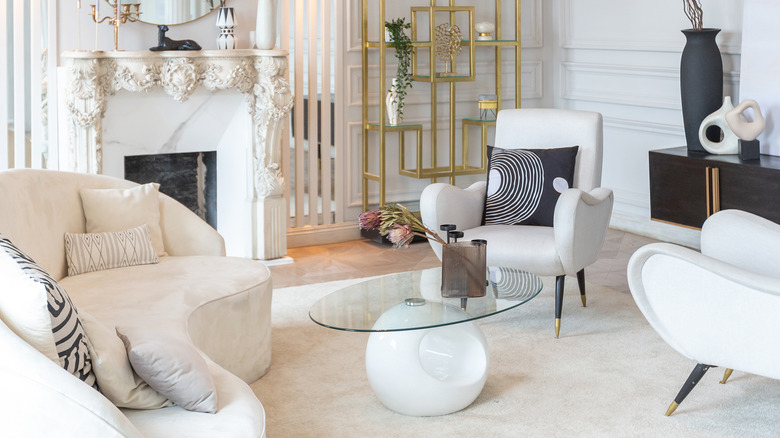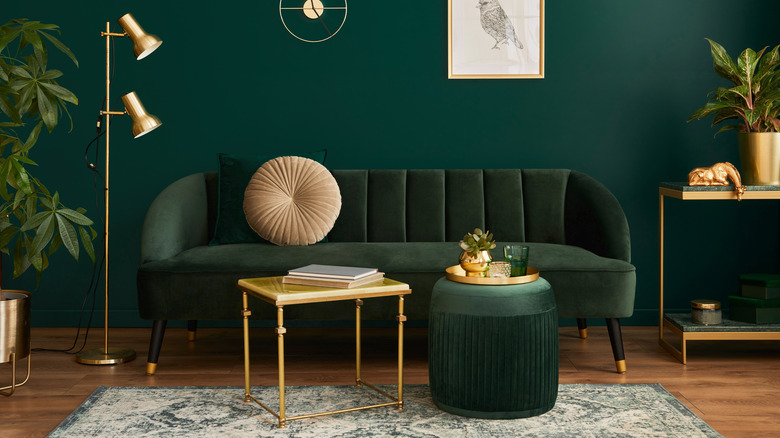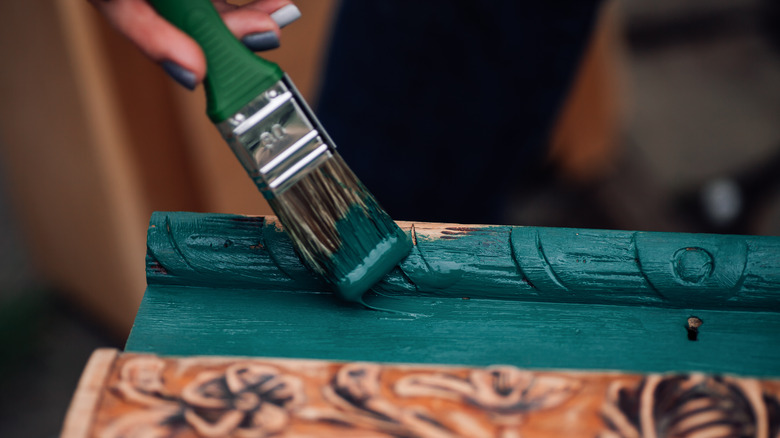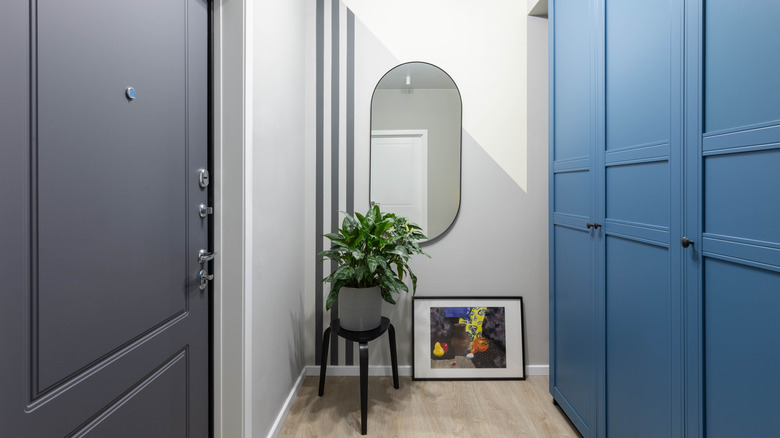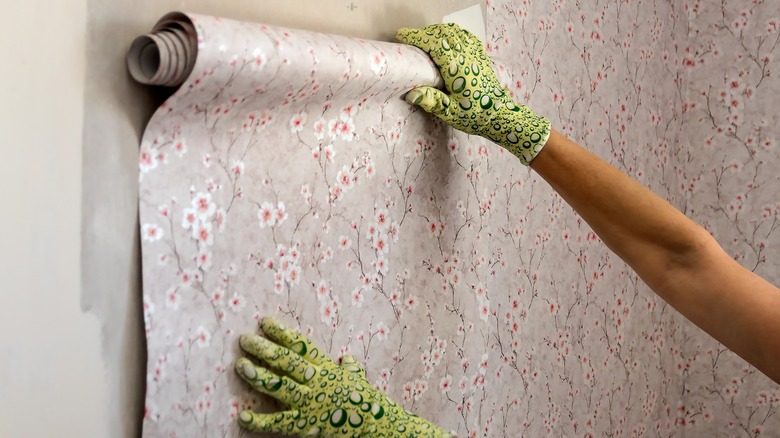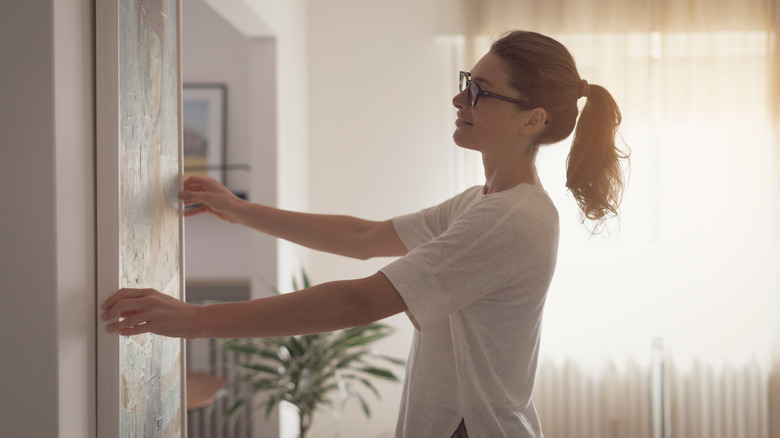5 Ways To Get The Timeless Modern Heritage Style Look In Your Home
Modern heritage design has been all the rage lately, as many homeowners seek to spice up their home's historic paint colors and more traditional elements with contemporary décor, modern art, and, of course, technology. Assuming you know what you're doing, the results are nothing short of fabulous. Luckily, there's plenty of room for experimentation when adopting this aesthetic. If you're the type who doesn't need an excuse to hit the thrift store for vintage furnishings, then you'll want to read on to find out how to achieve this look.
Conversely, if you're having trouble understanding exactly what it's all about, imagine the delectable tension created in a room that sports vibrant floral wallpaper, a wood panel accent wall, vintage furniture, and a bold abstract painting that demands your attention. According to Metro, the synergistic tension between old and new is what characterizes modern heritage, so it's no wonder this style is a favorite of vintage junkies, antique addicts, and homeowners who prioritize something more bold and adventurous.
1. Shop vintage
Gone down the Instagram rabbit hole of modern heritage design? Plan on visiting the closest retailer to achieve this look for your living room? Then you might as well save yourself the gas money. Realistically, you're more likely to have success finding appropriate furnishings at a thrift shop that specializes in vintage décor than a trendy boutique. For one thing, it doesn't make sense to pay a premium for new furniture that's meant to look old. More importantly, modern trappings intended to have a traditional appeal often miss the mark.
Don't worry, though. If nearby vintage furniture shops are few and far between, you still have quite a few convenient options (per Emily Henderson). Many professional designers swear by Facebook Marketplace, Etsy, and even Craigslist, but there are also some regional gems that offer a more curated selection. This way, you don't always have to keep one eye on the computer. Bottom line: The important thing is to make the investment in at least a few choice pieces of traditional décor to create the necessary tension between your home's more modern elements.
2. Use reclaimed and upcycled décor
Naturally, not everyone will be able to waltz into a thrift shop and find all the vintage accouterments on their wish list. However, those who enjoy DIY projects will find that staple décor can often be sourced for cheap or free, either from their home or other homeowners who are making room for something new. For instance, you may not have much use for an antique mirror in your redesign. If so, mount it above a vintage desk or some floating shelves and you have a one-of-a-kind vanity (per Masterclass) that can be painted with your favorite historical color.
Of course, no modern heritage makeover is complete without wall paneling — and upcycling and reclaiming different materials offer several distinct advantages over opting for big-box store offerings. For one, you're likely to save quite a bit of money by going the DIY route, although you can also feel good about having totally unique paneling that you sourced and upcycled. It's also worth asking around. For example, a dilapidated barn can provide you with more than enough wood for attractive bedroom paneling. Thus, when you're out and about town, don't be shy about inquiring about whether you can take some materials off peoples' hands.
3. Apply historic paint colors
Applying a fresh coat of paint is one of the quickest and easiest methods to completely transform the character of a room or piece of furniture. As such, if you're looking to implement some modern heritage magic into your home, busting out a painter's bib might be in order. However, color is such a dominant design characteristic that you'll want to eschew loud, decidedly modern hues. Many leading paint companies offer a wide variety of historical colors that are absolutely perfect for those seeking an interior offering a traditional appeal.
When shopping around for vintage colors to match your home's vibe, you'll likely come across a surprising amount of variety. From the vibrant, contrasting colors of the mid-1800s to the natural pigments of the early Victorian era, the past was a lot more colorful than some people might realize (per Historical Ipswich). Additionally, three- to five-color paint schemes were quite common in a number of eras, so you'll have plenty of options to play with color, contrast, and patterns if your heart desires.
4. Opt for bold wallpaper
Let's face it: Not every homeowner will be enthralled with the prospect of utilizing historical paint colors throughout the walls of their home. Luckily for those who wish to attain a daring, one-of-a-kind elegance, bold wallpaper and modern heritage are a match made in heaven. Of course, this will make sense to anyone who considers the popularity of bold wallpaper in Victorian-era homes, as well as English and American abodes during the first half of the 1900s (per the Victoria and Albert Museum).
Finding the right type for the room you're repurposing will offer several advantages compared to applying a fresh coat of paint. First off, you have the option of selecting wallpaper that showcases traditional design elements, which may come in rather handy for modern homes that lack such architecture or furnishings. Secondly, utilizing bold, traditional patterns is a perfect way to create tension with other, more modern aspects of the room.
5. Embrace tension
While bold wallpaper, historic paint colors, and charming vintage décor are all worthwhile for any modern heritage redesign, the way these elements interact with each other and your home's more contemporary pieces will help create the necessary tension for a truly unforgettable effect. Now, this certainly doesn't mean your paint, wallpaper, and artwork should all be vying to be the focal point of a room. Instead, a majority of the elements should complement one another to create a stylistic flow.
For instance, while some experts recommend hanging artwork in your home that matches the colors and mood of a particular room (per Furnishr), embracing bold, modern art and decidedly non-Western pieces make all the sense in the world for this design aesthetic. Likewise, you're encouraged to play with textures, patterns, and colors to your heart's content. This will allow the various elements of traditional design to create tension — both with each other and your more contemporary furnishings.
